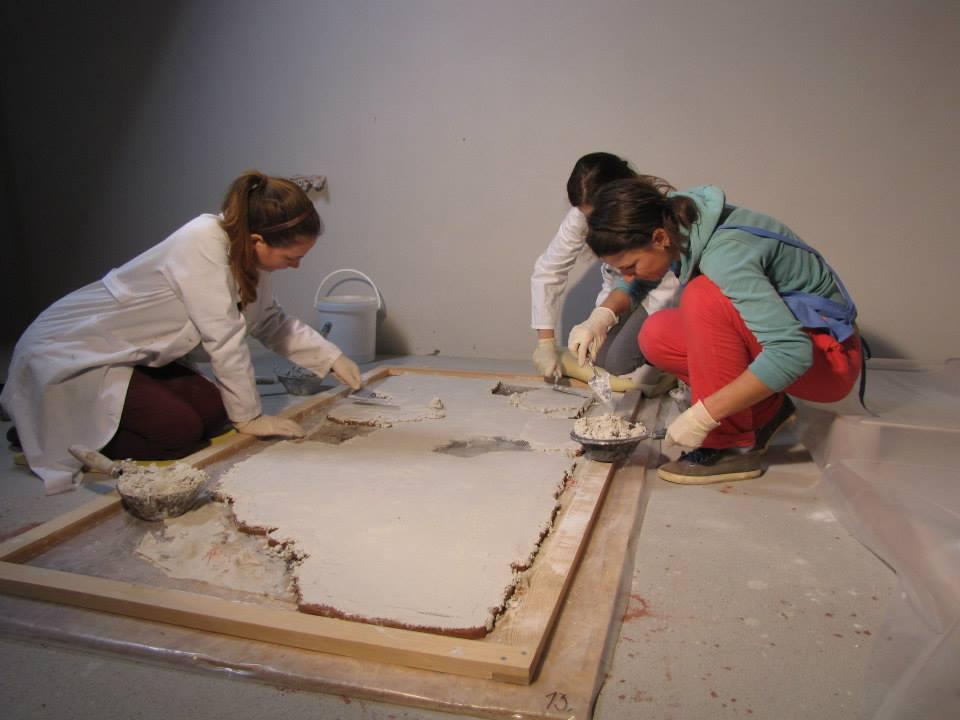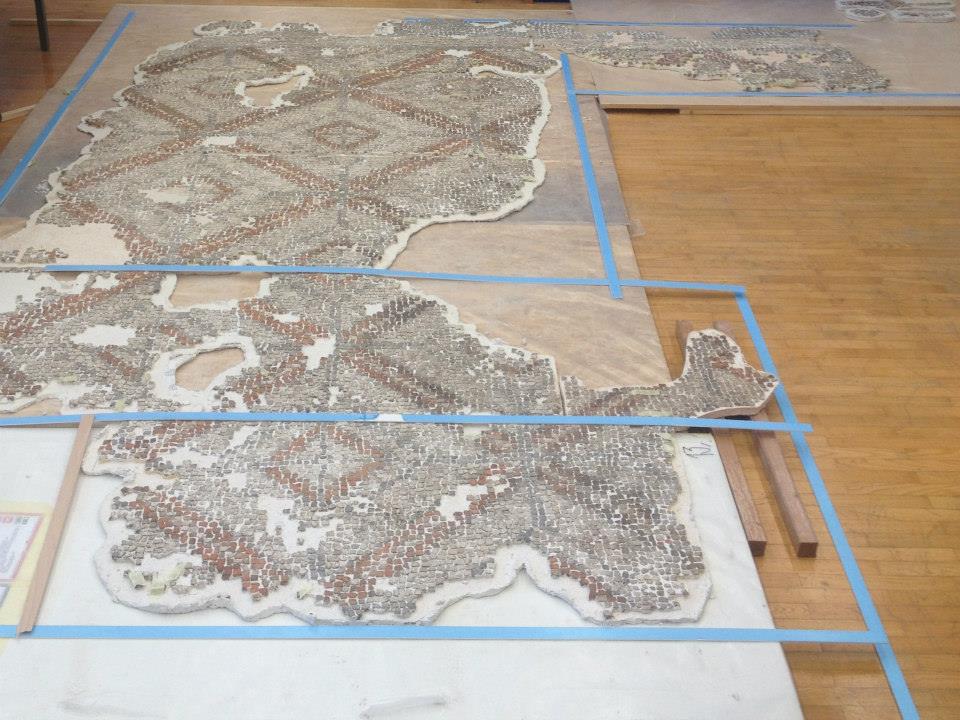

There are many such fragments of history, but before we can listen to their stories, being whispered to us for many years, we have to make a stop at the conservation-restoration workshops. The Year of Emona has shown us many of the ancient findings of the last decade. But before they could even be presented to us, the Restoration center at the Institute for the Protection of Cultural Heritage (ZVKDS) spent many years working on the findings.
All the new discoveries, and there were more than just a few, had to be cleaned, restored and prepared to be appropriately presented in the museums. Focus was also put on the archeological park (the Roman walls, the Emonan house, the Early Christian center) which many citizens may have forgotten, or were simply not aware of its significance.
Major breakthroughs have been made in the field of restoring ancient mosaics, as ancient mosaics rarely came to the Restoration center prior to the Year of Emona. "We have to realize that our generation never worked on mosaics, as all the bigger findings date back to forty years ago. Many mosaics were restored at that time and there has been no similar work since then," says the head of the Department for Mural Paintings, Martina Lesar Kikelj.
A breakthrough in restoration
The Restoration center got the chance to focus on that particular field once again as part of the preparations for the Emona exhibition, which was opened last year in the Ljubljana City Museum. The center first set out a plan, made an inventory of all the ancient mosaics which had been preserved in the museum's depot, sampled ancient mortar and mosaic stones, and then started with the demanding work of putting together the grand mosaic. It was discovered at the construction site of the new National and University Library. It's a three-coloured mosaic from the 4th century which decorated the floor of an early Christian chapel. It will be showcased as part of the exhibition Emona: a City of the Empire, until the 31st of May. For the mosaic to be showcased it had to be laid on lighter carriers, as using concrete for a base would have made it too heavy to move into the exhibition room.
Cement mortar and plaster, once regularly used for restoring mosaics, proved to be no longer appropriate. The Restoration center got in touch with the Building and Civil Engineering Institute and started testing various mixtures of mortar. They then came up with a lighter mortar with satisfactory mechanical characteristics - both compatible and reversible. The stone aggregate, which is very heavy, was replaced with light recycled glass, which can completely replace the use of sand. And after adding hydraulic lime the restorators developed a material and work methodology which will be more than welcome for future work.
At the very beginning of the project the restorators from the Restoration center connected with renowned Italian institutions in order to learn about the latest discoveries in the field of restoring mosaics and frescoes. Today they're the ones giving advice and sharing their experience to foreign colleagues at international conferences.
Through Emona’s legacy wih Emonec
Coming back to Ljubljana and the Year of Emona – www.emonec.com is a web domain which presents the legacy of Emona in a picture-playful way. It also connects all the institutions involved in preserving and presenting Emona's legacy. Emonec is especially intended for the young, but also to the wider public which doesn't have access to such content. The head of the project, Nadja Ocepek, says the website can also be used as educational material, broadening what the Institute for the Protection of Cultural Heritage has to offer.

































































